Transitional Interior Design Ideas: 9 Ways To Achieve The Look
Transitional interior design is a style that bridges the gap between traditional design and contemporary style. It uses elements of both styles to create a timeless look. If you’re looking for a way to update your home with a timeless look, transitional spaces may be just what you need.
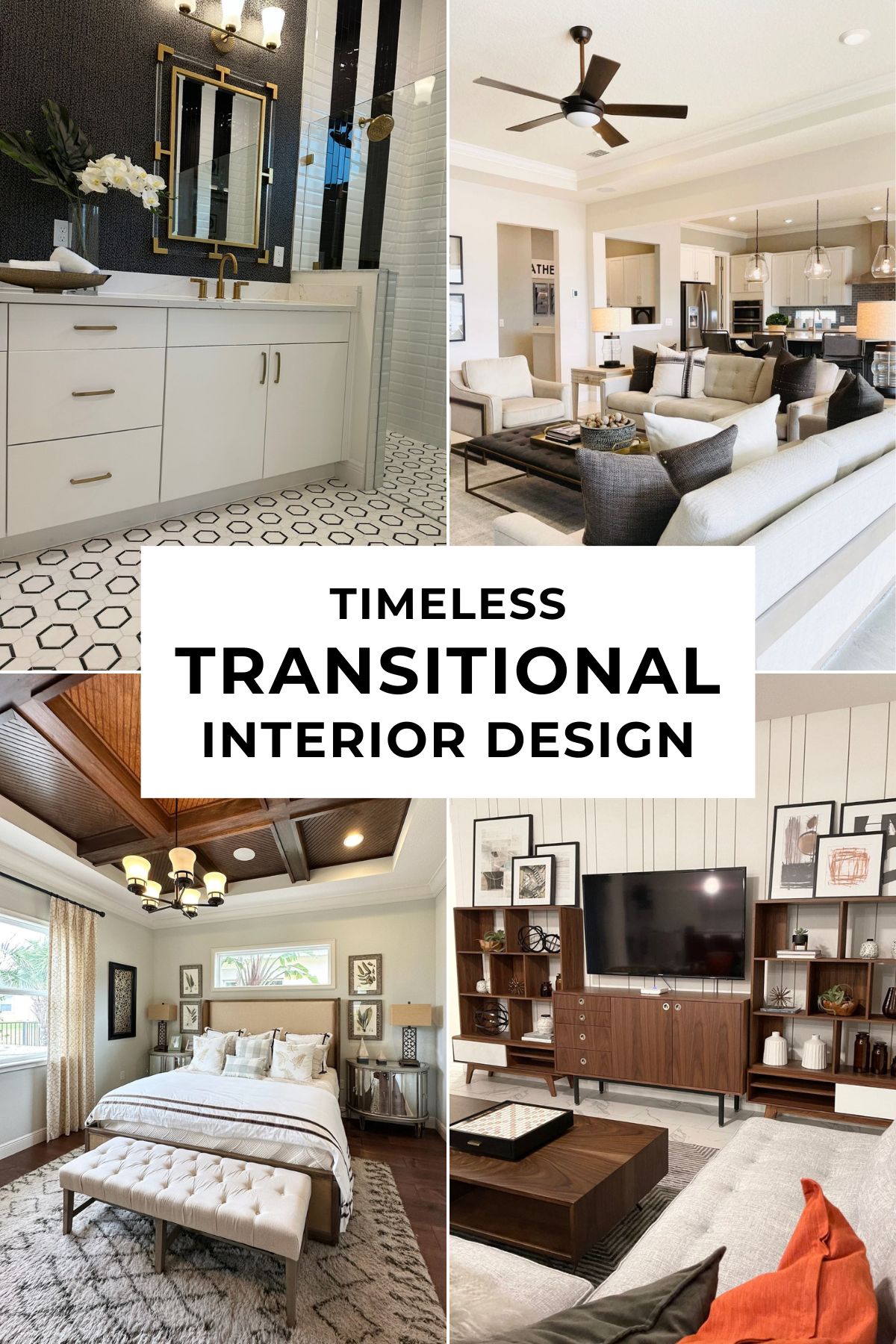
This article will share key tips on incorporating transitional interior design into your space.
This article may contain affiliate links, which means I earn a commission from the sale (at no extra cost to you!). I recommend items that I personally love and believe these products will help you create your dream home.
What is Transitional Interior Design?

Transitional interior design is a style that combines traditional and contemporary elements, resulting in a harmonious and balanced look.
It seeks to bridge the gap between classic and modern styles by merging the warmth and familiarity of traditional design with the clean lines and simplicity of contemporary design.
In transitional interior design, you’ll find a blend of old and new, with an emphasis on creating a cohesive and timeless space. It strikes a balance between ornate and minimalistic, creating a comfortable and inviting atmosphere.
Transitional vs Contemporary Design Styles
Transitional and contemporary design styles are both popular choices in interior design, but they have distinct characteristics and aesthetics.
Transitional Design
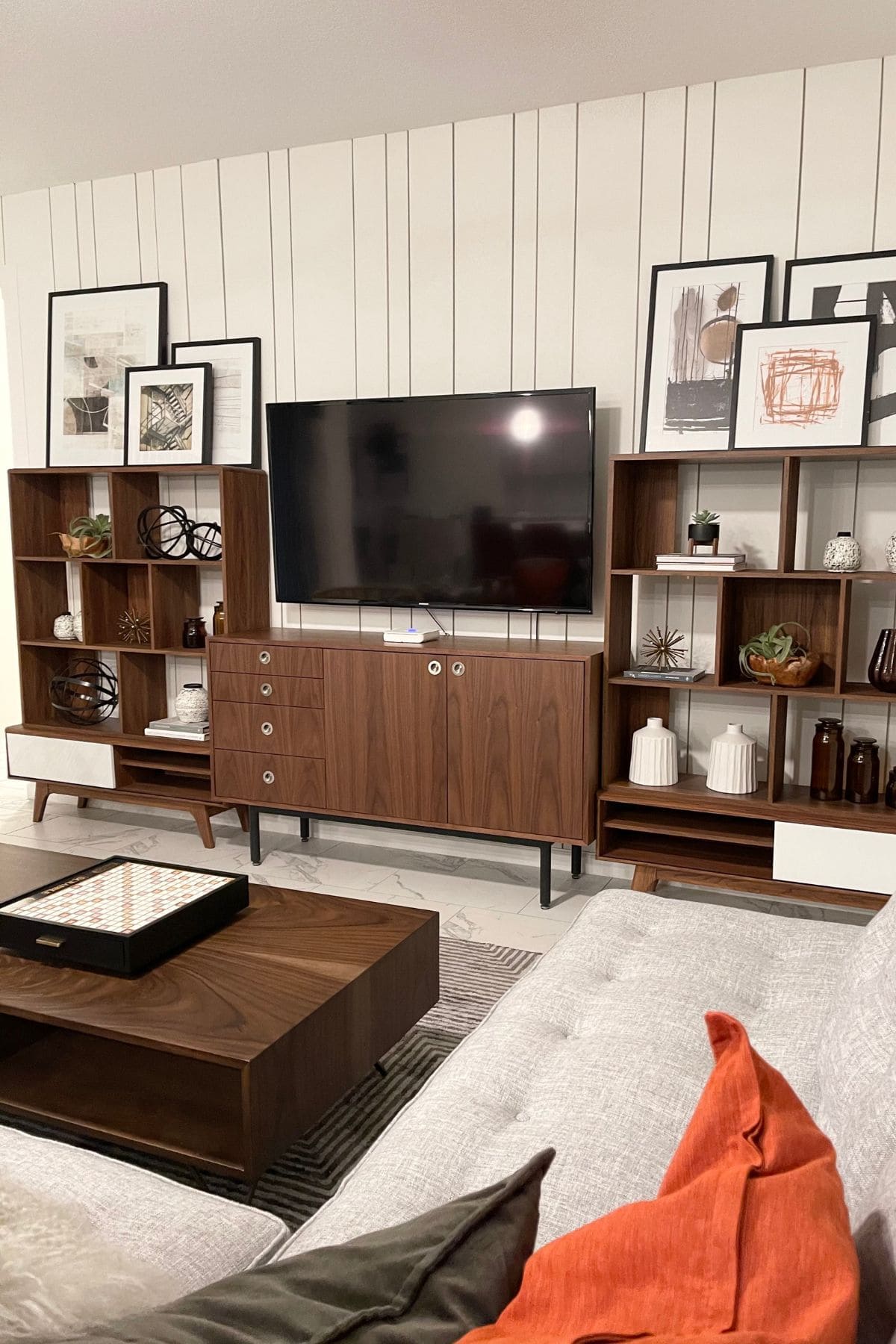
- Blend of traditional and contemporary: Transitional design combines elements from traditional and contemporary styles. It seeks to create a harmonious balance between the two, incorporating classic and modern elements in equal measure.
- Timeless and classic: Transitional design aims to achieve a timeless look that won’t go out of style. It often features neutral color palettes, classic furniture shapes, and subtle patterns.
- Warm and inviting: Transitional spaces have a warm and inviting atmosphere. They prioritize comfort and often include plush furniture, cozy textiles, and layered lighting to create an inviting ambiance.
- Use of mixed materials: Transitional design incorporates a mix of materials to add texture and interest. It combines elements like wood, metal, glass, and stone, creating a diverse yet cohesive look.
- Balanced and symmetrical: Transitional interiors strive for balance and symmetry. Furniture and decor are typically arranged in a way that feels visually pleasing and harmonious.
Contemporary Design
- Focus on the present: Contemporary design is rooted in the current time and reflects the design trends and aesthetics of the moment. It embraces what is popular and innovative in the here and now.
- Clean and minimalistic: Contemporary spaces have a clean and minimalistic look. They feature sleek lines, uncluttered spaces, and a lack of ornate details. Neutral color palettes are common, but bold pops of color may also be incorporated.
- Emphasis on functionality: Contemporary design prioritizes functionality and practicality. Furniture is often streamlined and multi-functional, maximizing space and usability.
- Use of modern materials: Contemporary design embraces modern materials and technologies. It often incorporates materials like glass, metal, concrete, and innovative synthetics.
- Eclectic and artistic touches: Contemporary spaces may feature eclectic and artistic touches, such as bold art pieces, statement lighting fixtures, or unique furniture designs.
- Flexible and evolving: Contemporary design is adaptable and open to interpretation. It can incorporate influences from various styles and allows for personal expression.
While transitional design combines traditional and contemporary elements in a balanced manner, contemporary design embraces current trends and focuses on minimalism, functionality, and artistic expression.
Ultimately, the choice between the two styles depends on personal preferences and the desired aesthetic outcome.
Elements of Transitional Design
A few key elements are essential to creating a successful transitional space. Some of the most important aspects include:
1. Mixing different design styles

A key part of transitional design is incorporating traditional style and contemporary elements into the space. This can be done through furniture, accessories, or color choices.
2. Using natural materials
Natural materials like wood, stone, and metal can help create a warm and inviting atmosphere in a transitional space.
3. Adding lots of texture

Using texture is another important element in transitional design, as it can help add visual interest to the space. You can achieve this by incorporating textured fabrics, rugs, drapes, pillows, upholstered furniture, etc.
4. Utilizing calming colors
Interior designers often recommend using calming colors like grey, beige, or soft blues in transitional spaces.
This is because they give the impression of clarity and openness without making the room appear cold or sterile.
5. Using traditional decor
For example, if you choose to display framed prints or paintings on your walls, it’s ok to move away from the traditional arrangement. Instead of hanging all at the same height, try hanging some higher and others lower than eye level.
Transitional interior design is also all about combining old and new, so make sure to mix simple lines with more ornate features.
6. Timeless and enduring

One of the key goals of transitional design is to create a timeless aesthetic that will stand the test of time.
By combining classic and contemporary elements, transitional interiors have a lasting appeal that can adapt to changing design trends.
History of Transitional Interior Design
Transitional interior design is not defined by any one particular style but rather encompasses many different styles that are in harmony with each other.
The term was coined in the 1950s to describe a decorating style that blended traditional and contemporary elements together.
This concept has been used in homes for centuries, but it wasn’t until the late 20th century that it became popularized as an approach to designing rooms or entire houses.
Transitional designs may include contemporary furnishings with traditional details such as crown molding and paneled walls
They may also incorporate classic furniture pieces like sofas and armchairs into more modern spaces without sacrificing their original character.
Some designers will use transitional design to create an eclectic style that mixes and matches design techniques. Lastly, transitional designs are among the most popular interior decorating styles today.
This console table's frame and legs constructed of solid ti...
Incorporating Transitional Interior Design
When it comes to incorporating transitional interior design into your home, we have broken down some essential elements to consider.
Open Floor Plan and Layout

Having an open floor plan in a transitional design style is preferred. You want an airy feel to the space.
As a result, you may choose to eliminate walls and create one large room. Removing interior doors will make a space appear bigger while also giving it a more modern appeal.
Use a Neutral Color Palette

Transitional spaces often feature a neutral color scheme, with shades of beige, gray, taupe, and white as the foundation. These colors create a calming and timeless backdrop for the room.
The soft colors will bring all of the elements together and ensure that the space doesn’t feel too heavy or dark.
You can also paint the window trim and doors a contrasting color to the walls to give the space more depth.
This is especially effective if you do not want to make major changes, such as adding crown molding or paneling on your walls.
Wall Art
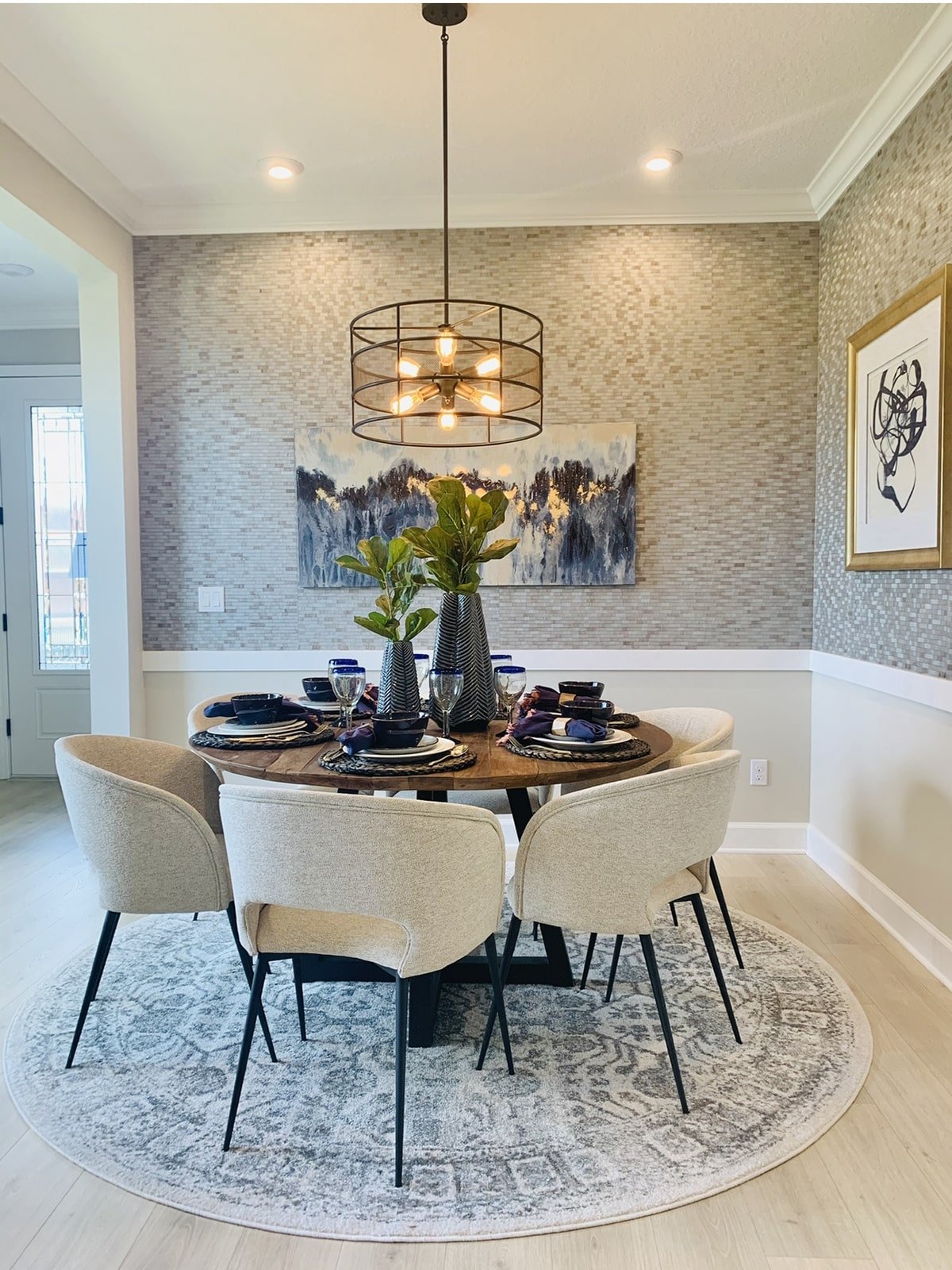
When it comes to wall art in transitional interiors, less is often more. You want your walls to be a backdrop for your furniture and accessories, not a focal point.
Too much wall art can make a room feel cluttered and busy. Instead, choose a few pieces that are meaningful to you and that will add visual interest without taking over the space.
If you’re stuck on choosing, go with something classic and timeless like an oil painting or a black-and-white photograph.
Furniture

Transitional style furniture typically features clean lines and simple shapes, making mixing and matching with other pieces easy.
Furniture blends both contemporary design and traditional styles. For example, some furniture can have traditional hardware with a modern finish.
In addition, transitional furniture features clean lines and simple shapes, the design lends itself to open floor plans that are both airy and inviting.
Try adding furniture groupings that incorporate several styles to create an eclectic look.
Avoid having your furniture all facing the same way, instead stagger chairs so they face different directions creating visual interest.
Lighting Fixtures

Lighting fixtures can play a huge role in transitional interior design. It can be used to create a sense of harmony between the old and new, add visual interest, and set the tone for the entire space.
When choosing lighting fixtures for a transitional look, it’s important to consider both function and style. You want light fixtures that provide adequate lighting while adding visual appeal.
In addition, look for stylish and versatile pieces, so they can easily adapt to whatever style you choose for your home in the future.
You can incorporate different types of lighting to blend the contemporary and traditional. For example, you can add round pendant lights in your living room and a chandelier in the entryway.
Flooring Options for Transitional Interiors

A luxury vinyl plank is a great option for creating a warm and inviting space, while a wood-look tile can give a more modern feel.
Stone-like tile or marble floors are also a great option since they play on the traditional look. You can then add modern elements with furniture and lighting.
Whichever option you choose, make sure to select a color and style that will complement the overall design of your home.
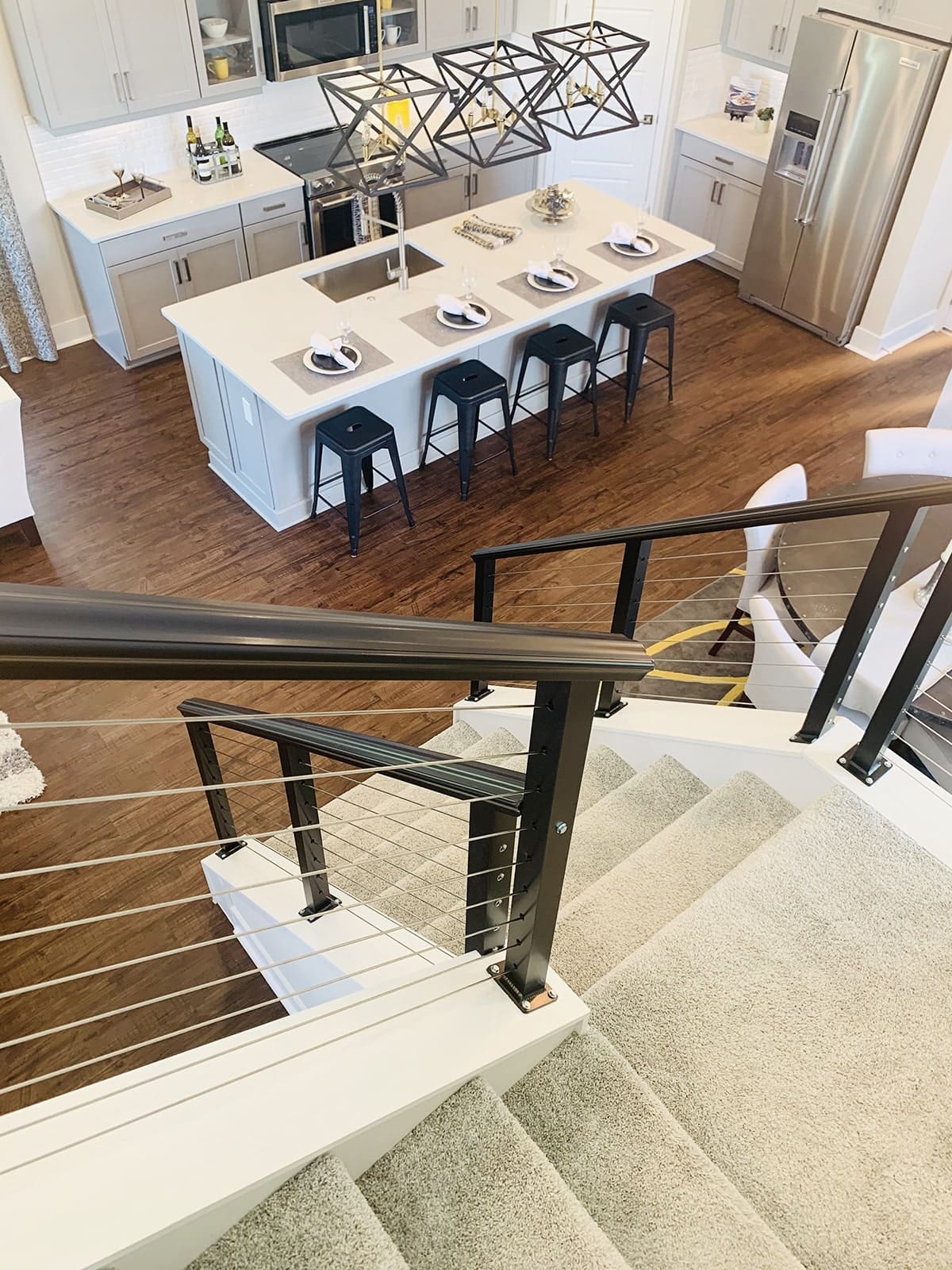
Accessories
Transitional interiors tend to have a less-is-more approach to accessories.
Instead of cluttering the space, a few carefully chosen decorative pieces are used to add personality and visual interest without overwhelming the overall design.
You can add some beautiful accent colors with throw pillows and throw blankets.
Area Rugs
- Created in Turkey using the most advanced rug-making technology, these printed designs provi...
Area rugs provide a lot of texture and are an easy way to include traditional elements into your space. In transitional interior design, they tend to be traditional in style and encompass a variety of patterns and colors.
To add to that, area rugs can also give your space a sense of warmth and coziness.
Blending Different Design Styles
- This Wingback club chair is a perfect addition for any room in your home
- The tufting...
The goal of transitional design is to seamlessly blend traditional and contemporary elements.
For example, you might see a traditional-style sofa paired with modern accent chairs or a mix of antique and contemporary artwork.

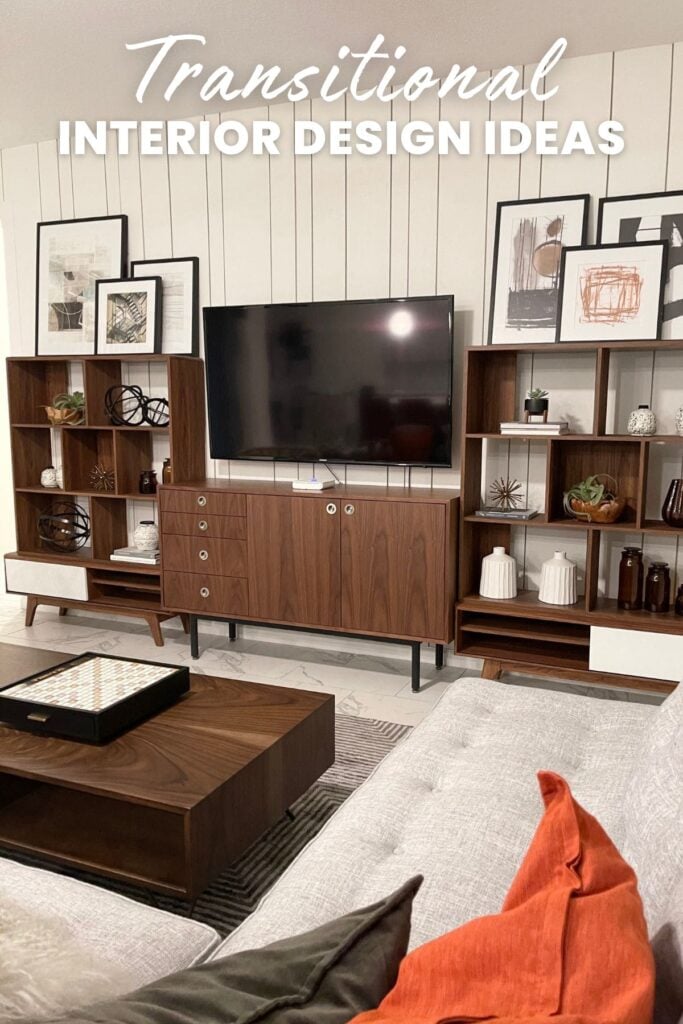
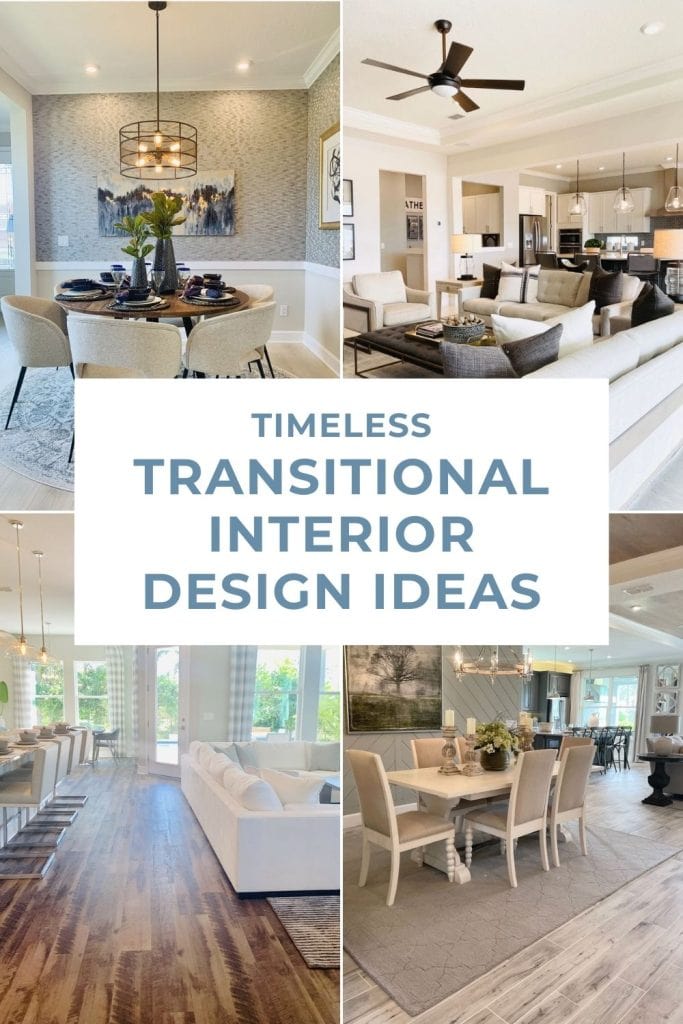
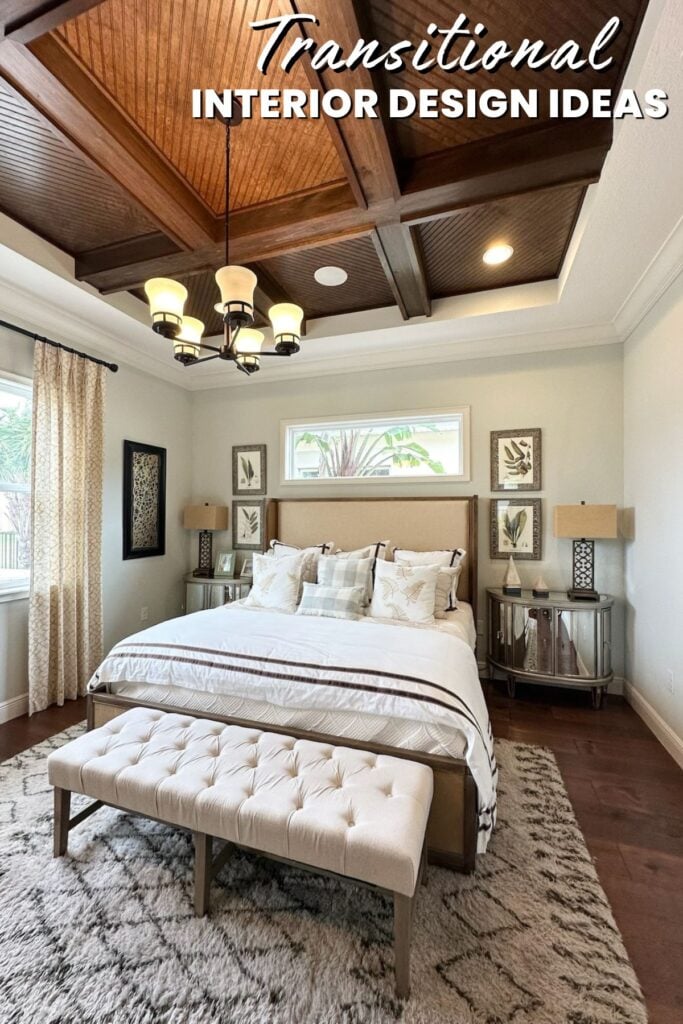


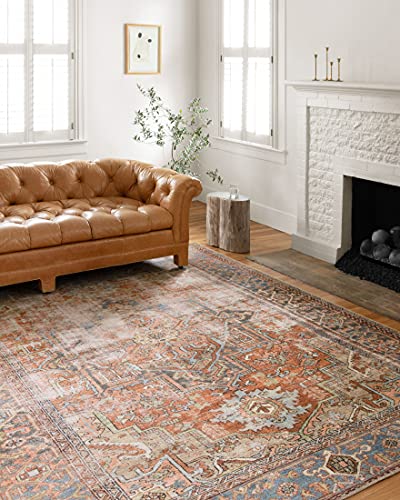







Hi Nicole, could you please help me? I am trying to go for transitional style. Redoing the living room. I have a floral sofa light color, 2 queen Anne end tables and a sofa table that I want to reuse. White walls, medium oak laminate floors. Could you suggest coffee table style and credenza style that would work? Thanks!!
Hello Janie,
You have a great starting point with the items you are looking to use. I would ask what is the flow/size of the room? Do you feel it is a smaller space or just right with the current pieces you are looking to style around? I would suggest glass top, lighter woods and/or oval shape coffee table to appear there is more space. Larger spaces you can do a square and/or darker woods. The credenza would also depend on the current look and size of the room. This is where you can use a more contemporary piece and size would be based on what you want to store inside. I hope this helps and if not send me a pic of the room and I will help you out.
Enjoyed your post. I love the transitional style. I have a small apartment living room with a fire place on one wall and I have gray walls with white trim my living room leads to the patio door. Entering the front door you can see directly to the patio door which is a feaux double door with white 2 inch blinds. I am obsessed with a blue velvet sectional or sofa to place in my living space that I want to be comfortable and inviting. I am concerned a sectional will overwhelm the space. I also need a space for my desk since I work from three days a week. So I am not sure on placement of a sectional. My living room and dining area are open to one another, however there is a slight separation because there is a hallway leading to my bedrooms. I am also loving the idea of a metalic gold, Blue and white color theme. Then there is the TV, hmmm not sure I should mount it over the fireplace? I am not sure where to start. Any suggestions. I have’nt purchased my furnishings yet, I have just been looking at so many layouts. But I want inviting and comfort for sure.
Hello Steph,
There is a lot in this one. I am trying to visualize your space. I love that you have an open concept that leads to a patio area. I think you will be ok with a sectional as long as it is does not over power the space. Use mirrors or acrylic side tables to make it more usable space. Send me a video to my Instagram @FloridaHomesLiving to see where the desk can be positioned.
Hi there!
Do you know where that round, wood dining table is from? I love it!
Grace